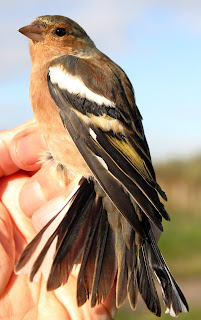There’s not a lot in my update tonight. I got out for a couple of hours intending a walk from Lane Ends to Pilling Water, hoping to come across a Lapland Bunting along the sea wall now that a few are beginning to appear locally, but Hi-Fly had a big shoot on next to Pilling Water. It wasn’t a couple of folk taking pot shots, more like a major organised half-a-day occasion, with dozens of beaters and shooters with their attendant noise which echoed along the marsh.
So I decided to walk in the other direction, towards Cockerham, but first I got a few bits and pieces near the car park. There were plenty of Pink-footed Goose again, way out towards the sands, but only 7/8000 today and not the 20,000 or so of Sunday, and those that flew inland had adjusted their flight direction to Cockerham, away from the sound of gunfire on the flooded but baited stubble. Without much effort I counted 5 Little Egrets as they intermittently disappeared than reappeared by walking in and out of the distant tidal ditches. I could hear a trilling Little Grebe from the western pool and below the car park a Chiffchaff, but the main pool was devoid of wildfowl except for a dozen or two Mallard.
I headed off east where I came across 2 Wheatear on a stretch of rocks put down to strengthen the sea wall, a patch of ideal habitat for Wheatears, where there’s always insects down in the crevices. A bit further on, about 50 yards out on the marsh is a great lump of tree carried in by the tides months ago, a perfect spot for the wintering Merlin, or so I thought some weeks ago. I passed level with the dark mass, looking at the sticking up branch in shadow on the right hand side when something made me lift my bins just in case. It really was; the Merlin had let me walk so far, but as soon as I made to look closer, the branch lifted off and the Merlin shot off towards Braides before I could get a decent picture. At least I now know the bird is around and has found the perch. The quicksilver, fearless Merlin, one of my favourite birds.


A Kestrel hovered above and along the wall, and as I walked I flushed 2 Grey Partridge from the grassy slope, but they flew back to overgrazed Sheep City where there isn’t much concealment. I continued on alongside the inland drainage, full to overflowing in places, too full for muddy margin waders but not too full for a Little Egrets or a Greenshank, both of which flew off to the marsh at my arrival. I found a third Wheatear up here, on yet another pile of stones, and also a Pied Wagtail.


Up this way it’s a long walk in both directions, one I used to do both ways when Lapwings and Redshank bred in the adjacent fields, before sileage, winter crops and farm improvements; but not today as I turned back towards Lane Ends There were definitely 3 Wheatears, and I didn’t see much different on the way back except for a Snipe, the Kestrel again and the constant flights of pinkies and Curlew heading inland.
It was a pleasant enough walk but there's nothing quite like the tried and trusted favourite spot is there? Better luck tomorrow I hope when the sportsmen have gone.
It was a pleasant enough walk but there's nothing quite like the tried and trusted favourite spot is there? Better luck tomorrow I hope when the sportsmen have gone.













































.jpg)












